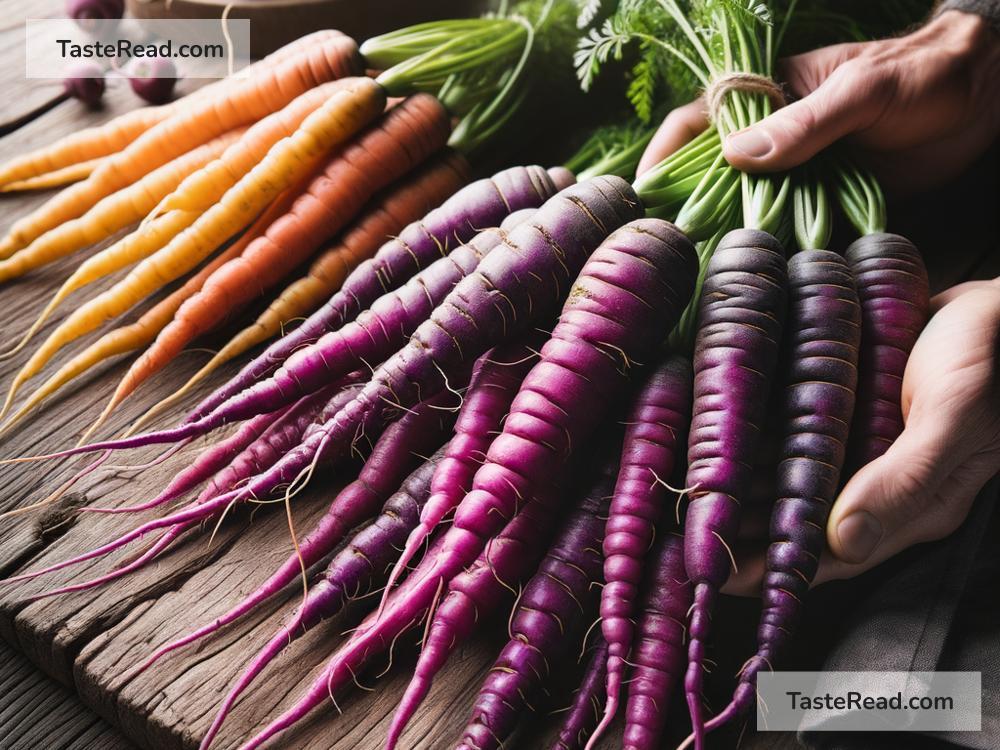Why Carrots Were Originally Purple
Carrots are one of the most popular vegetables in the world today, loved for their sweet crunch and vibrant orange color. Whether in salads, soups, or simply as a healthy snack, carrots are a common part of our daily meals. But did you know that carrots weren’t always orange? In fact, the original carrots were purple! This might surprise many people, especially since most of us grew up thinking carrots were always bright orange. So, why were carrots originally purple, and how did they become the orange-colored vegetable we see today? Let’s find out!
The Ancient History of Carrots
The story of carrots goes back thousands of years to the land that is now Afghanistan. In this region, the wild ancestors of carrots first grew. These early carrots were nothing like the carrots we eat today. They were small, tough, and bitter, but they served an important purpose—they were used for their medicinal properties rather than as food. Farmers of ancient times began cultivating these wild carrots to improve their size and taste. However, unlike today’s carrots, the most common color for these early varieties was purple, followed by yellow, white, and even black.
Purple carrots owe their color to natural pigments called anthocyanins. Anthocyanins are responsible for the dark blue, red, and purple colors found in many fruits and vegetables, like blueberries and eggplants. In addition to their vibrant look, anthocyanins also provide health benefits. They act as antioxidants, helping to fight harmful substances inside the body. This means purple carrots were not only visually striking but also packed with nutrients.
Natural Variations in Carrot Colors
As farming techniques improved, carrots were grown in different regions, and new varieties began to appear. Climate, soil, and local preferences influenced the types of carrots farmers grew. Different colors like yellow and white carrots also became more common over time, especially in places like the Mediterranean and Europe.
Still, purple carrots remained the most popular type. They were widely cultivated and used for centuries, especially in Asia and the Middle East. But the world of carrots was about to change dramatically in the late Middle Ages.
The Dutch and the Rise of Orange Carrots
Around the 16th and 17th centuries, something unusual happened: orange carrots started to become popular. Historians believe that the orange carrot was developed in the Netherlands (also known as Holland) by Dutch farmers. This wasn’t a random accident—it was actually intentional breeding.
The Dutch were experimenting with carrot varieties by cross-breeding different types of carrots to improve their flavor, texture, and appearance. They managed to produce a carrot that was not purple but bright orange. This orange color came from a pigment called beta-carotene, which is an important nutrient that our bodies use to produce vitamin A. Beta-carotene is also what gives sweet potatoes and pumpkins their orange color.
Why did the Dutch focus on orange carrots? Some people think they were motivated by national pride! During that time, the Netherlands was ruled by the House of Orange, a royal family whose name became a symbol of the country. The orange carrot may have been seen as a tribute to this royal family, making it a patriotic vegetable. Whether or not this was the main reason, the Dutch farmers succeeded in creating orange carrots that were sweeter, more pleasant to eat, and easier to grow than their purple ancestors.
Orange Carrots Take Over the World
Once the Dutch introduced orange carrots, they quickly became popular across Europe and, eventually, the rest of the world. Farmers liked growing orange carrots because they were hardy, productive, and tasted great. Over time, orange carrots replaced purple carrots as the dominant variety, especially as farming methods spread more widely.
By the 18th century, orange carrots were the standard form of the vegetable, and purple carrots slowly faded from view. Today, when most of us think of carrots, we imagine them as orange. However, purple carrots and other colorful carrots have recently made a comeback, thanks to modern farming and a growing interest in heirloom vegetables.
Why Are Purple Carrots Coming Back?
Even though orange carrots are everywhere, purple carrots are becoming popular again. In grocery stores and farmers’ markets, you might spot carrots in shades of purple, yellow, red, and even black. These colorful carrots are often marketed as “rainbow carrots” and are appreciated for their unique appearance and health benefits.
Purple carrots, in particular, are high in antioxidants like anthocyanins, which can support heart health, improve vision, and reduce inflammation. They’re also a fun and eye-catching way to add color to your meals. People today are more curious about trying unusual and ancient varieties of vegetables, which is why purple carrots are re-entering the spotlight.
Conclusion
Carrots have come a long way over the centuries, evolving from wild, bitter roots to the sweet, crunchy, orange vegetables we love today. But the history of carrots reminds us that not all carrots were orange—they were originally purple! Thanks to innovative farmers and the power of plant breeding, carrots have changed over time to suit human tastes and preferences. Whether orange, purple, or yellow, carrots remain one of the most versatile and nutritious vegetables. So next time you see purple carrots in the store, remember—you’re looking at a little piece of history! Enjoy them and celebrate the fascinating journey of this humble root vegetable.


